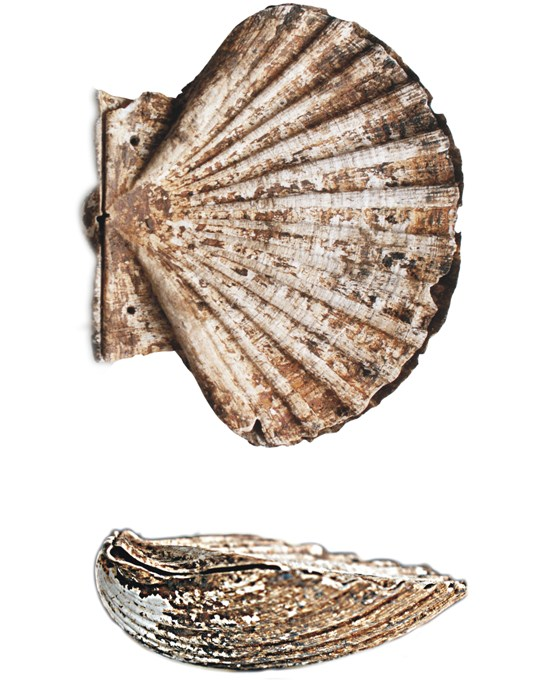Feb 4 2020
A joint study carried out by researchers from the Consorcio de Mérida, the University of Granada (UGR), and the Institute of Cultural Heritage of Spain has analysed a makeup container from the 1st Century AD that still contained traces of the original product. The results of the study have been published in the latest issue of Saguntum.
 Image of the scallop showing the remains of the pigment. Image Credit: Consorcio Ciudad Monumental de Mérida
Image of the scallop showing the remains of the pigment. Image Credit: Consorcio Ciudad Monumental de Mérida
The item was found in 2000, during construction work on a new industrial unit in what was once the ancient capital of Lusitania: Augusta Emerita (present-day Mérida). In parallel with the building work, an archaeological dig revealed an entire funeral zone dated to the 1st century AD, which was later exhumed.
One of the tombs was particularly striking, due to the presence of the cremated remains of what appeared to be a deceased woman along with an interesting series of funerary items. Among the objects found alongside her were ceramic cups, bone spindles that symbolised the woman’s textile-spinning, glass pieces (among which were small containers for storing scented oils), and the remains of a folding box made of bone. There was also a large quantity of nails, which may have belonged to a funerary lectus (bed) that was burned during her cremation.
Sealed content
It was in this context that a make-up container made out of a malacological specimen, pecten maximus (king scallop), was found. Its two valves were intact, sealing the cosmetic contents inside. Both halves presented two small holes in the ‘ears’ of the shell, indicating that the container would once have been closed using silver filaments. Once the scientists had opened the mollusc, they were able to identify, in addition to the sediment that had filtered through, the remains of the cosmetic substance—specifically, a small ball of pinkish powdery conglomerate, partially crumbled in some places. Given the nature of the finding and its fragile state, a sampling protocol was initiated to preserve it and, subsequently, undertake a compositional archaeometric analysis.
The use of molluscs as containers was widely practiced for cosmetics of solid and semi-solid consistency, given the cost and inaccessibility of the most highly-prized type of container, made of alabaster, which was almost exclusively found in the quarries of Naukratis in Egypt. Indeed, the use of molluscs as cosmetic containers dates back thousands of years. For example, dating back as early as 2,500 BC, tiny shells were found in the Sumerian city of Ur containing pigments used for cosmetic purposes. The wealthiest classes, on the other hand, used boxes (pyxis) that typologically emulated shells but used more luxurious materials such as amber or precious metals.
Analysis of the cosmetic content of the findings in Mérida showed that the small pinkish ball was composed of madder lake or ‘rose madder’ obtained by using cold alum as a fixative agent.